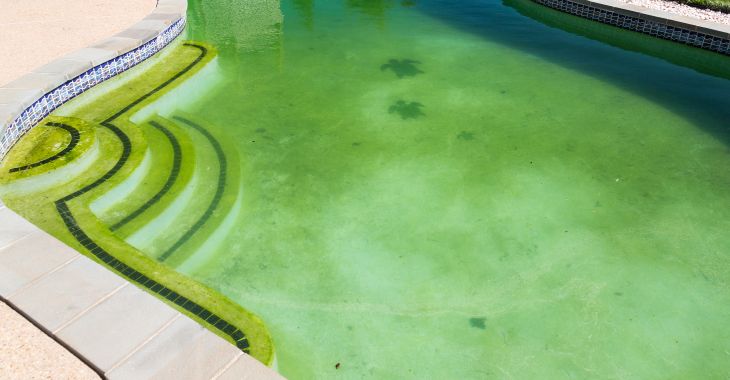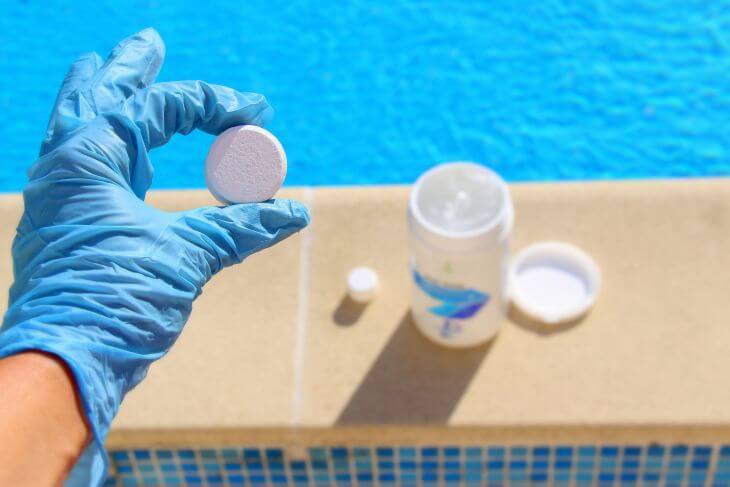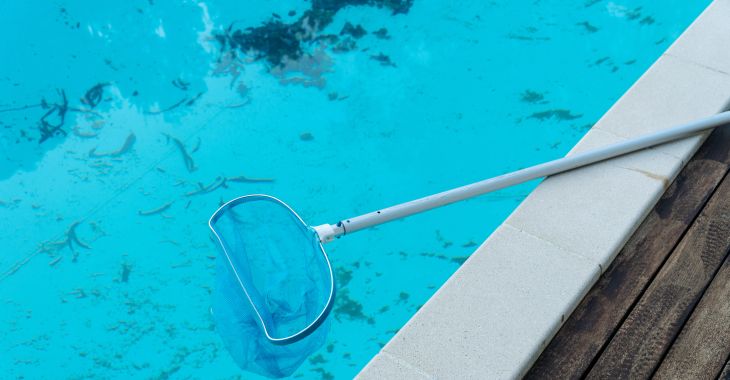How to Get Rid of Yellow Algae in Pool

Yellow algae in your pool, also known as mustard algae, can be a stubborn and unsightly problem. Unlike green algae, yellow algae are more resistant to chlorine and tend to cling to pool surfaces, especially in shaded areas. Here’s how to get rid of yellow algae in pool environments and keep it from coming back.
What Causes Yellow Algae in Pool?
Before diving into the removal process, it’s crucial to understand what causes yellow algae in pools. These algae thrive in environments with low circulation and inadequate sanitation. Inconsistent chlorine levels, poor filtration, and warm water temperatures can all contribute to yellow algae.
Yellow algae can also enter your pool through contaminated swimsuits, toys, or pool equipment, making it easy to reintroduce the problem even after treatment.
Step-by-Step Process to Remove Yellow Algae from Pool
To prevent yellow algae from growing, it’s important to maintain a proper balance of chemicals and keep your pool clean. Once yellow algae appear, immediate action is needed to ensure the problem doesn’t worsen or spread. Here is a step-by-step process for removal.
1. Brush and Vacuum the Pool
One of the first steps in getting rid of yellow algae in your pool is physically removing the algae from the pool surfaces. Use a pool brush with stiff bristles to scrub all walls, floors, and especially the shaded areas where yellow algae thrive.
Make sure to clean around the ladders, steps, and pool lights as well. After brushing, vacuum the pool thoroughly to remove loosened algae particles. For best results, vacuum to waste if your filter system allows it. This will prevent the algae from reentering the pool through the filter.
2. Shock the Pool with High Chlorine Levels
Yellow algae are more resistant to standard chlorine levels, so it’s essential to “super chlorinate” or shock the pool. To do this, raise the chlorine levels to 10 parts per million (ppm) or higher. You’ll need to use a strong pool shock product and follow the instructions on the packaging to add the correct amount.
Ensure your pool pump and filter are running continuously while shocking the pool. Keep the water circulating to distribute the chemicals evenly and allow them to attack the algae thoroughly. For the best effect, shock the pool in the evening so the chlorine isn’t broken down by the sun.
3. Use Algaecide for Additional Protection
After shocking the pool, it’s a good idea to add an algaecide designed to target yellow algae. Look for a product labeled specifically for mustard or yellow algae. This extra layer of protection can help kill any remaining algae spores that weren’t eliminated during the shock process.
Follow the algaecide instructions carefully, ensuring proper dosing based on your pool size. Allow the pool water to circulate for at least 24 hours after applying the algaecide to maximize its effectiveness.
Preventing Yellow Algae from Returning
After you’ve successfully removed yellow algae from your pool, you want to take preventative steps to ensure it doesn’t come back. Since yellow algae in pool are resilient and can reappear, the key is maintaining proper pool hygiene and chemical levels.
1. Keep Chlorine Levels Consistent
One of the most effective ways to prevent yellow algae from growing is by keeping your chlorine levels consistent. Regularly test your pool water to ensure the chlorine stays within the ideal range of 1 to 3 ppm. Don’t let the chlorine dip too low, as this opens the door for algae growth.
2. Improve Circulation and Filtration
Yellow algae thrive in areas of your pool with poor water circulation. Make sure your pool’s filtration system is functioning properly, and consider running the pump for extended hours to improve circulation.
Check that the water is flowing through all parts of the pool, including corners, steps, and other hard-to-reach areas where algae tend to grow.
3. Clean Pool Accessories and Equipment
Yellow algae can hitch a ride on swimsuits, pool toys, and equipment, spreading from one pool to another. To avoid reintroducing the algae, always clean and disinfect items that go in and out of the pool. You should also deep-clean your pool equipment on a regular basis.
egular Pool Maintenance for Algae-Free Water
Maintaining your pool on a regular basis is crucial in preventing not just yellow algae but all types of algae. Here are a few additional tips to help you keep your pool in top condition:
- Test Water Weekly: Use a reliable water testing kit to monitor chlorine levels, pH balance, and alkalinity. Correct any imbalances promptly.
- Brush and Vacuum Frequently: Even if you don’t see visible algae, regularly brushing and vacuuming your pool helps prevent algae spores from taking hold.
- Use Algaecide Preventatively: Adding a small dose of algaecide on a regular basis can serve as an extra line of defense against algae growth.
- Run Your Filter Longer in Warm Weather: Algae thrive in warm, still water, so during hot months, consider running your filter for longer periods each day to ensure constant circulation.
Dealing with yellow algae in your pool can be frustrating, but by following the steps outlined above, you can regain control and restore your pool to its sparkling, clean condition. Regular brushing, consistent chlorine levels, and proper filtration are key in both removing and preventing yellow algae in the future.

Always stay vigilant, and make pool maintenance a priority to enjoy an algae-free swimming experience all season long. If you need help with yellow algae in pool removal, contact a landscape or pool professional that offers pool maintenance services.


